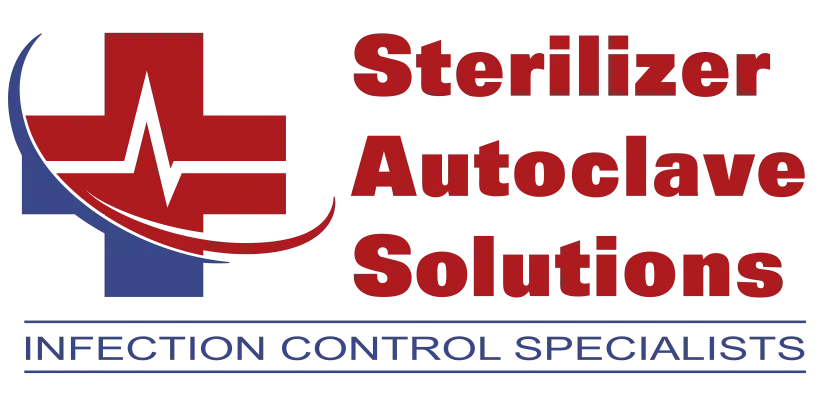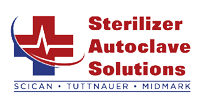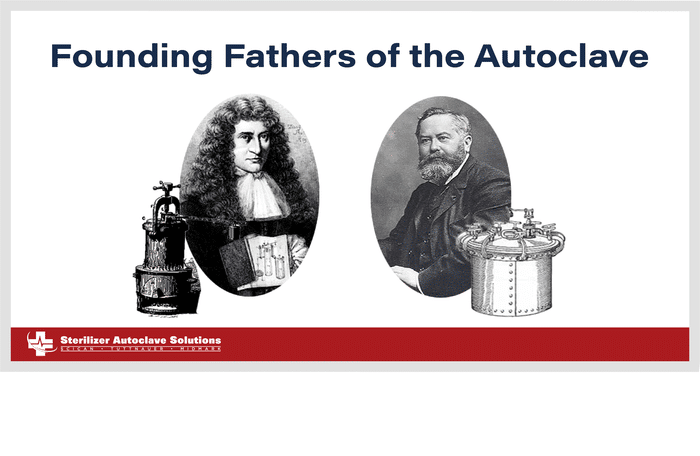The Founding Fathers of the Autoclave
No, unfortunately, “father of the autoclave” was not his real middle name. It was actually Edouard. After the first name, Charles and followed by the last name, Chamberland. At least, he was the creator of the first officially named “autoclave” device. The history itself is actually more extensive than you might think. There were actually a couple of people that were more than instrumental in the evolution of what we know as the autoclave today. And, seeing as Father’s Day is right around the corner, what better way to celebrate it using something we know well.
So we’d like to briefly touch on the founding fathers of the autoclave as we know it. Give you a little bit of insight as to what they did for this big step in medical technology and sterilization as a whole. But of course, if you’d like to read about the history of autoclaves and sterilization in their entireties, we have articles on both of those subjects respectively.
So what better way to start then at the beginning?
The “Founding Fathers”
Sure, it’s no official title or name for these guys, but there are definitely names you should know. Specifically Denis Papin and Charles Chamberland. Each one had their own roles in their respective times that contributed to the design and subsequent functions of the autoclave itself. And with Father’s Day on the horizon, we think it’s safe to say that these men can be considered some of the founding fathers of the autoclave. With each of them finding new ways to innovate during their times. And those innovations leading to the evolution of the autoclave to become what we know it as today. So let’s start with Denis Papin, and his invention, the “digester.“
Papin and the Pressure Cooker
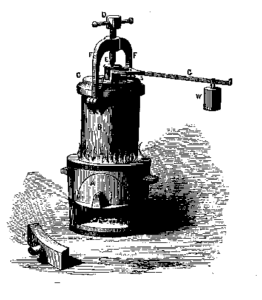 1680 is the magic number in this story. It was the year that pressurized chamber devices became a new thing, and brought a new way to do things. And Denis Papin is
1680 is the magic number in this story. It was the year that pressurized chamber devices became a new thing, and brought a new way to do things. And Denis Papin is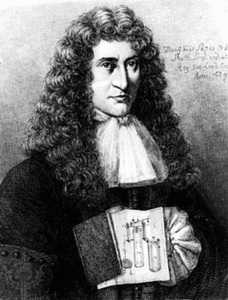 the man behind that. A French physicist, mathmetician and inventor that, while not having the longest history, did some interesting things. He made different designs for things that he himself ended up creating, or designed by someone else based on his design. Like Papin’s model of a first-of-its-kind piston steam engine based on the designs of one Thomas Savery. Or his ship design that used hand-cranked paddles. But, no doubt the most notable one here to us being his steam digester.
the man behind that. A French physicist, mathmetician and inventor that, while not having the longest history, did some interesting things. He made different designs for things that he himself ended up creating, or designed by someone else based on his design. Like Papin’s model of a first-of-its-kind piston steam engine based on the designs of one Thomas Savery. Or his ship design that used hand-cranked paddles. But, no doubt the most notable one here to us being his steam digester.
Known only as the “Digester,” this device trapped hot air in the chamber and it causes it to expand. But because the air is trapped, as it would expand, pressure would form. And this pressure also increased the boiling point of the water inside. And this superheated steam would penetrate whatever food item would be put in it, effectively cooking it. He first addressed the Royal Society in 1679 on the subject of his digester, though not much is said about what came of that encounter.
Papin was what was known as a Huguenot, which were essentially French Protestants. And as such, faced the restrictions that were set in place by King Louis the XIV. Since the Edict of Nantes was a decree that would give him proper rights as a Protestant, was revoked in 1685. But despite the restrictions, his life was full of different notable inventions and ideas like the ones we mentioned before. There are conflicting dates as to specifically when he was buried, but as it turns out he lived to be 66, and died around August of 1713.
Charles Chamberland and the First Autoclave
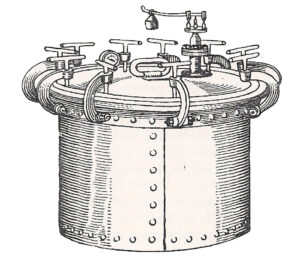
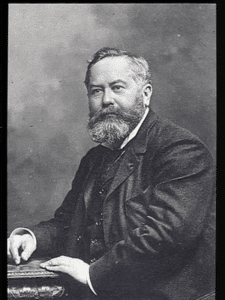 So now we jump ahead to 1876, and talk about the other important name, Charles Chamberland. Just like Papin, he was mentioned in our history of autoclaves article. Because while Papin invented the basic skeleton of what the autoclave could become, Chamberland is the one who defined it as it was. The first official autoclave was created by Chamberland and patented to the designs of Papin’s “Digester” device. Sterilization was getting more and more important since Papin’s time. And more things started to come to light during Chamberland’s era. Food preservation, the invention of canning, germ theory, new ways to combat bacterias. And especially the process of pasteurization, a method created by Chamberland’s mentor and collaborator, Louis Pastuer.
So now we jump ahead to 1876, and talk about the other important name, Charles Chamberland. Just like Papin, he was mentioned in our history of autoclaves article. Because while Papin invented the basic skeleton of what the autoclave could become, Chamberland is the one who defined it as it was. The first official autoclave was created by Chamberland and patented to the designs of Papin’s “Digester” device. Sterilization was getting more and more important since Papin’s time. And more things started to come to light during Chamberland’s era. Food preservation, the invention of canning, germ theory, new ways to combat bacterias. And especially the process of pasteurization, a method created by Chamberland’s mentor and collaborator, Louis Pastuer.
Together, they combined forces and created the first autoclave for sterilization and medical purposes. This all came after an encounter at the school they attended in France. Where Pastuer and another scientist, one Dr. Bastian, were debating as to the proper method to kill germs through sterilization. Pastuer and Bastian both had contradictory methods as to how germs can properly be killed through sterilization methods. But both had flaws that led to the germs rapidly producing, the opposite of what was intened. Chamberland stepped in and exposed the flaws in the research, and dictated the proper temperature in which germs can be killed through this method. And Pastuer even credited Chamberland in his 1876 publishing for his contribution to perfecting his research.
But that’s not all. Besides that encounter, and the creation of the autoclave, Chamberland had quite the extensive history in medical breakthroughs. Here are a few more notable events in the life of Charles Chamberland:
- He made a porcelain water filter for kitchen sinks that was so much better than any water filtration system at the time, that Chamberland became a household name.
- After working with Pastuer on an anthrax vaccine, he then developed more vaccines for cholera and swine measles, along with the anthrax vaccines, that were produced en massed and saved around 5 million lives.
- He became an honorary member of the Société de Biologie because said previously mentioned water filter was insanely useful, in stopping the typhoid epidemic in 1884, and also later on the filter was used to discover diphtheria and tetanus toxins.
- In 1885, he was elected to the Chamber of Deputies in the Republican side of the government. To read numerous reports on public health, and to legislate mandatory vaccination of children. Then in 1887, he was elected to the city council of his home town, and later the mayor.
And those highlights sum up essentially just how important Chamberland was. Not only to the autoclave, but many other places his contributions helped. He died about 10 years after Pastuer did, around 1905 to a chronic illness.
Final Thoughts
What lives both Papin and Chamberland lived. Both having such large hands in the way the evolution of sterilization technology was shaped. The founding fathers of the autoclave. It’s incredible, really. The things you don’t really think about, like where that sterilizer in your office came from. The stories that come with sometimes the most common things have the most interesting history. And there’s definitely a whole lot more to the history of autoclaves and sterilizations than just these two guys. We’ve got our articles explaining how both came from the past to the present to read any time. And if you have any questions about your autoclave or anything else, feel free to contact us at 704-966-1650. Or you can find us using the links below.
As always if you have any questions about this process or anything else please feel free to contact us and take advantage of our “FREE TECH SUPPORT.”
We also offer FREE VIRTUAL TECH SUPPORT to “See and Talk” with a “Real Time Live Technician” for any problems you may be in need of help with.
You can also use our “FREE MAINTENANCE PROGRAM”. Take the guesswork and worrying about what unit is due for maintenance and which maintenance cycle it is time for. We will keep track of all your autoclaves and let you know when it’s time for anything.
